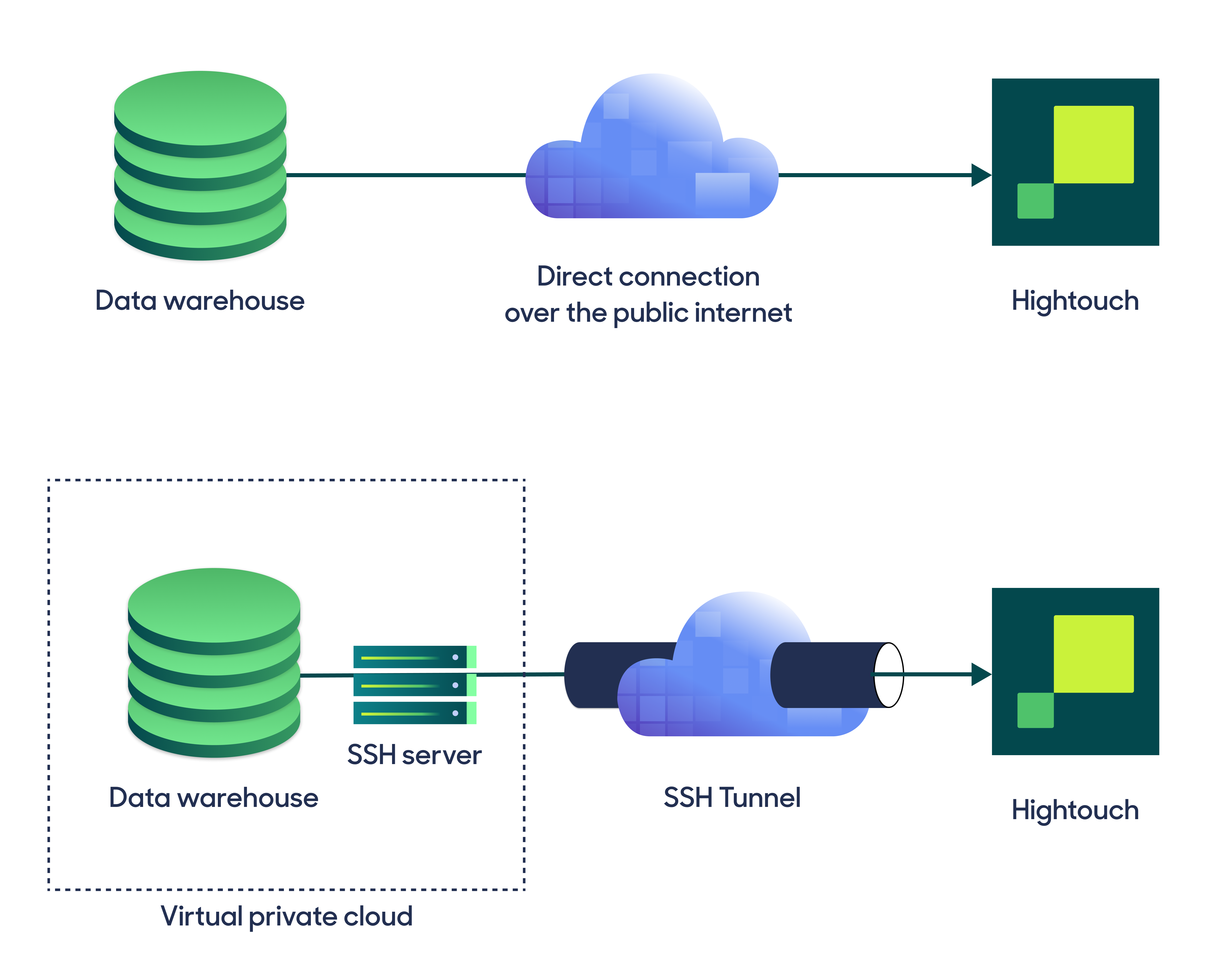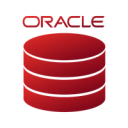Power internal tools, in-app experiences, and more
Overview
Hightouch lets you pull data stored in your Oracle database and push it to downstream destinations. Most of the setup occurs in the Hightouch UI, but you need access to your Oracle instance for information like your host, port, database name, and credentials.
You may need to allowlist Hightouch's IP addresses to let our systems connect to your warehouse. Reference our networking docs to determine which IP addresses you need to allowlist.
Connection configuration
To get started, go to the Sources overview page and click the Add source button. Select Oracle DB and follow the steps below.
Choose connection type
Hightouch can connect directly to Oracle over the public internet or via an SSH tunnel. Since data is encrypted in transit via TLS, a direct connection is suitable for most use cases. You may need to set up a tunnel if your Oracle instance is on a private network or virtual private cloud (VPC).

Hightouch supports both standard and reverse SSH tunnels. To learn more about SSH tunneling, refer to Hightouch's tunneling documentation.
Configure your source
Enter the following required fields into Hightouch:
- Host: The hostname or IP address of your Oracle server.
- Port: The port number of your Oracle server. The default port number is 1521, but yours may be different.
- Database: This specifies the database to use when Hightouch executes queries in Oracle DB. This is different than the host, but your host address might contain your database name.
- Username: The user that has access through Hightouch to the database and tables you want to pull from. It's best to create a new user specifically for Hightouch access. Do not use the root user.
- Password: The password for the specified user.
Choose your sync engine
For optimal performance, Hightouch tracks incremental changes in your data model—such as added, changed, or removed rows—and only syncs those records. You can choose between two different sync engines for this work.
The Basic engine requires read-only access to Oracle. Hightouch executes a query in your database, reads all query results, and then determines incremental changes using Hightouch's infrastructure. This engine is easier to set up since it requires read—not write—access to Oracle.
Test your connection
When setting up a source for the first time, Hightouch validates the following:
- Network connectivity
- Oracle credentials
- Permission to list schemas and tables
- Permission to write to
hightouch_plannerschema - Permission to write to
hightouch_auditschema
All configurations must pass the first three, while those with the Lightning engine must pass all of them.
Some sources may initially fail connection tests due to timeouts. Once a connection is established, subsequent API requests should happen more quickly, so it's best to retry tests if they first fail. You can do this by clicking Test again.
If you've retried the tests and verified your credentials are correct but the tests are still failing, don't hesitate to .
Next steps
Once your source configuration has passed the necessary validation, your source setup is complete. Next, you can set up models to define which data you want to pull from Oracle.
The Oracle source supports these modeling methods:
- writing a query in the SQL editor
- using the visual table selector
- leveraging existing dbt models
Tips and troubleshooting
If you encounter an error or question not listed below and need assistance, don't hesitate to . We're here to help.
Compatible versions
The supported Oracle DB version is 19c. Other versions aren't officially supported but may work regardless.
Unsupported data types
Hightouch does not support INTERVAL types for Oracle.
